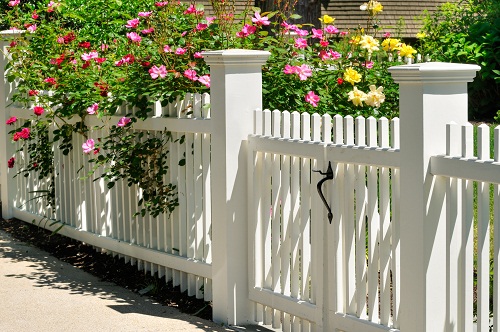
When people think about creating an eco-friendly home, most usually focus on the inside. They focus on ways to conserve energy and utilize fewer resources for example which is a great start. But you can also embrace eco-friendly choices and design outside your home. For example, eco-friendly gates and fences are a simple way to do this.
What are Eco-Friendly Gates and Fences?
Traditionally, most gates and fences are made from metal or lumber. Metal fences require a substantial amount of resources to manufacture. While the lumber industry is obviously not environmentally friendly, due to the amount of trees being cut down to supply the wood. On the other hand, eco-Friendly fencing is made from sustainable materials and there are actually quite a number of choices to consider.
Sustainable Fencing Materials
Gates and fences can be made from a wide number of materials. From bamboo to plastic you can find the fencing that suits your needs, budget, and personal style.
Bamboo Gates and Fencing
Bamboo fencing is both aesthetically pleasing and sustainable. Like lumber it may need to be treated and cared for with annual washing and sealing. It’s also important to know that not all bamboo fencing is considered sustainable. True, the material grows quickly and requires minimal resources. However, the popularity of bamboo has made it a little less sustainable.
Look for bamboo that comes from a local source and is certified by the Forest Stewardship Council (FSC).
Composite Gates and Fencing
One of the most sustainable materials to consider is composite lumber. This type of fencing is made from recycled plastics and wood fiber or wood waste. Additionally, it doesn’t require any painting, staining, or sealing. You don’t need to use chemicals to maintain a composite fence. Composite fencing also lasts much longer than traditional lumber because it is resistant to the sun’s effects and it’s resistant to water, mold, and mildew.
Reclaimed Lumber
Another eco-friendly option is to use reclaimed lumber. This material can be used to create a beautiful fence with texture and variety in the features. You’re also reducing waste. The downside to reclaimed lumber is that it does need to be washed, treated, sealed, and stained. You can use green materials to take care of this annual maintenance as well. For example, you can use natural stains made from soybean oils. You can also enjoy the reclaimed lumber in its natural form without stains or paint.
Embracing an eco-friendly lifestyle can extend beyond the interior of your home and choosing a green fence for your outdoor space can make a significant impact on the environment. Additionally, green gates and fences add personality and style to your home and improve the value of your property.

